 |
Shane Ardo The central theme of the Ardo Group’s research program is to understand and control photoinduced reaction mechanisms at interfaces, with the goal of maximizing energy-conversion efficiency for realistic applications. The Ardo Group will design and control interfacial asymmetry through synthesis, engineering, and modeling of the molecule–material structures for solar energy conversion. The photoelectrochemical and photophysical properties of hard and soft material interfaces will be manipulated via molecular functionalization, electrostatic engineering, and physical protection. The results of each study will be pertinent to fundamental electrochemistry and charge-, energy-, and ion-transfer phenomena. |
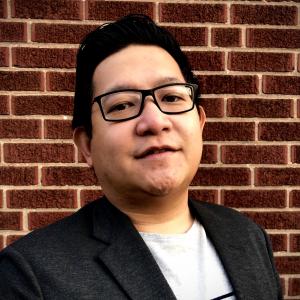 |
Maxx Q. Arguilla Our group focuses on understanding the chemistry and physics of solids in the bulk, at the nanoscale, and down to the atomic level. We, therefore, seek to leverage the chemical and molecular control over atomic-level and nanoscale morphological dimensionalities in realizing confined electronic, optical, and quantum phenomena. Our vision is to take advantage of these tools and create classes of materials that will enable nanoscale confinement in bulk macroscale platforms. |
 |
Suzanne A. Blum Research in the Blum Group focuses on the development of new catalysts and metal-mediated reactions with applications in organic synthesis. We are also developing single-molecule techniques to image catalytic reactions at individual transition metal centers. These single-molecule techniques are part of a big-picture, ground-breaking project to change the way chemists think about studying chemical reaction mechanisms: by actually watching reactions live, one molecule at a time. |
 |
William Bowman The Bowman Lab aims to realize advanced electroceramics using novel multiscale correlated characterization. We work at the nexus of fundamental and applied ceramic science, and advanced transmission electron microscopy (TEM) to advance fundamental understanding of the atomic-scale interplay between electrical, chemical, and mechanical properties of oxide ion-conductors and electrocatalysts. Central to our work is developing novel correlated multiscale TEM methods and employing them in concert with macroscale electrochemical testing to steer improved material design and performance for next-generation devices. |
 |
Kieron Burke We are a small interdisciplinary group of research chemists and physicists, dedicated to spreading the use of density functional theory (DFT) throughout the known universe, but particularly in chemistry, physics, materials science, and nanoscience. We mostly develop methodology, but also collaborate with excellent groups both within and beyond UCI on novel applications. Some recent and ongoing projects include electron-molecule scattering using time-dependent density functional theory, atoms and molecules in strong laser fields, and transport through single organic molecules. |
 |
Peter Burke I am interested in quantum electronics and quantum information science, and specifically, the development of high-speed semiconductors and high-frequency electronic and optical devices. My current efforts are aimed at the understanding of high-frequency (microwave and infrared) properties of two-dimensional electron systems formed in semiconductor quantum structures |
 |
Philip Collins Our research focuses on the properties of carbon nanotube circuits, and especially the interdependence of electronic behavior and chemical modifications. By introducing single defects into a nanotube conductor and tailoring the defects’ chemistry, we access a regime where resistance, noise, and transistor-like behaviors can all be tuned with nearly single bond precision. |
 |
Stacy Copp Our research focuses on nanoscale photonic materials made of soft matter building blocks, biomimetic nanomaterials, and materials informatics approaches to nanoscience. |
 |
Zachary Fisk Our ultimate goal is to find organizing principles and framework to understand complex materials with strongly interacting electrons. The quantum many-body problem is a notoriously difficult problem and yet condensed matter physics has proven to be one the most technologically rewarding areas of physics. Our group’s focus is currently on the single crystal growth and characterization of new intermetallic compounds containing rare-earth elements. |
 |
Filipp Furche The goal of research in my group is to develop new electronic structure methods and to apply them to chemistry. We are specifically interested in methods showing promise for excited states and nanoscale systems. Often, our methods allow applications to systems or properties that were not accessible before. Systems studied by us include fullerenes, structures, and properties of gold clusters, and cephams. |
 |
Nien-Hui Ge We are applying ultrafast nonlinear optical spectroscopy, microscopy, and nanoscopy to understand photophysics and photochemistry of nano and quantum materials, such as nanopillars, quantum dots, nanowires, and 2D materials. |
 |
Zhibin Guan Our research program focuses on exploring new concepts and strategies at the interfaces with catalysis and biology for the design of well-defined polymers, biomaterials, and nanomaterials. Our current research projects include Polymer Architecture Design through Catalysis, Biomimetic Supramolecular Polymer Designs, New Biomaterials from Natural Building Blocks, and Self-assembly of Nano-Objects into Superlattices. |
 |
Kai He Our research goal is to leverage the advanced electron microscopy tools to understand fundamental materials behavior at the atomic level and engineer novel materials with improved properties for real-world applications in nanoscience and nanotechnology, quantum information sciences, and clean energy technologies. |
 |
Wilson Ho Our research focuses on nanoscale chemical and physical phenomena with an emphasis on probing the basic properties of single atoms and molecules in their nano-environment on solid surfaces by using scanning tunneling microscopy. The goal is to obtain detailed descriptions of small molecules which form the basis for understanding chemical and physical processes at surfaces and properties of nanostructured condensed matter and molecular materials. |
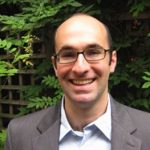 |
Allon Hochbaum We are interested in living materials and biological-inorganic interfaces to address pressing issues in global energy demand and human health. We specialize in the synthesis of bioinspired and biomimetic materials, and study the chemical, physical and electrochemical interactions between microbes and materials. |
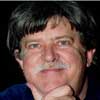 |
Herbert Hopster In our laboratory, we study the magnetic properties of ultra-thin magnetic systems by spin-polarized electron spectroscopies. In one experiment a spin-polarized electron beam is scattered off the sample surface, and the polarization and intensity of the scattered electrons are measured as a function of energy loss. In another experiment, we probe the surface magnetization by measuring the spin polarization of secondary electrons or photoemitted electrons. |
 |
Luis Jauregui Light-matter interaction in Quantum opto-electronic devices. Hybrid opto-electronic devices to study high-temperature superfluidity and condensates (lasers, LEDs, optical interconnects, excitonic transistors and devices, etc). AMO type of experiments in solid state systems only available in 2-D (Quantum simulators). Topological excitons and “topological optoelectronics” exploiting unique properties from 2-D materials, such as moire patterns, large excitonic binding energies and strong quasi-particle interactions. 2. Quantum transport of modular nano-devices. Exploration of exotic properties of Quantum materials and devices at low-temperatures and high magnetic fields. Quantum materials and devices beyond graphene for spintronics, plasmonics and quantum information. Topological materials and devices for quantum information. Quantum transport of twisted bilayer 2-D materials, superconductivity in strongly correlated systems. |
 |
Ilya Krivorotov My research interests are focused on new physical phenomena resulting from the interactions between magnetic, electronic and lattice degrees of freedom in lithographically-defined and self-assembled nanostructures. This research relies on the development of new nanoscale electronic devices using state-of-the-art nanofabrication techniques. Experimental measurements of electronic processes in these nanodevices are typically carried out with sub-nanosecond time resolution at cryogenic temperatures. |
 |
Matt Law Nanomaterials offer great potential to deliver breakthroughs in the efficiency, cost, and scalability of devices that produce electricity or fuels from sunlight. Our laboratory develops solar energy conversion and storage devices built from 0D, 1D and 2D nanoscale materials, integrating materials synthesis and fundamental optoelectronic characterization with device fabrication, testing, modeling, and optimization. |
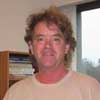 |
Jon M. Lawrence Heavy fermion compounds are rare-earth-based materials with many unusual properties. Most of the compounds behave as metals at low temperatures, but with anomalously large effective masses so that the Pauli susceptibilities and coefficients of specific heat are large. My research has several stages for studying heavy fermion compounds. |
 |
Elizabeth Lee My research aims to bring fundamental understanding of how the dynamical arrangement of atoms and their electronic structure impact the material-wide properties during their synthesis, processing, and device operating conditions. My group’s research activities include quantum defects in semiconductors, solid-state interfaces for energy applications, and methodological developments for materials simulations. |
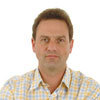 |
Vladimir Mandelshtam Theoretical and computational methods provide a powerful tool for the study of chemical dynamics and often help us to understand the experiments. One area of our research is the development of such methods and their application to studying the dynamics of small molecules, radical, and clusters. Our computational methods range from ab initio, which are designed to solve the quantum equations exactly, to those that try to employ certain approximations, such as semiclassical, simplifying the calculations while retaining the physically relevant properties of the system. |
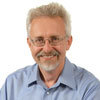 |
Craig Martens The general goal of our research program is to extend the detailed understanding currently attainable for few-body systems to many-body problems. We are interested in the phenomenology of ultrafast dynamical processes in complex systems–the detailed course of events on atomic length scales and femtosecond to picosecond time scales where dynamical “decisions” are made: sudden energy transfer events, bond breakage or formation, barrier crossing or recrossing, and others. |
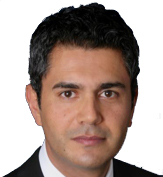 |
Ali Mohraz The aim of research in my group is to understand and exploit colloidal interactions, chemistry, assembly, and response to external fields to design microstructured materials with enhanced functionality for composites, biomimetic applications, alternative energy, and environmental remediation. Current projects involve both fundamental and applied elements of colloid synthesis and surface modification, microfluidics, guided- and self-assembly, and characterization of structure and dynamics by quantitative confocal microscopy and light scattering. |
 |
SungWoo Nam Many mechanical deformations, such as buckling, crumpling, wrinkling, collapsing, and delamination, are usually considered as threats to mechanical integrity and are avoided or reduced in the traditional design of materials and structures. Our research goes against these conventions by tailoring such mechanical instabilities to create new functional morphologies. We use ultralow bending stiffness and semiconducting properties of atomically-thin materials to enable emerging mechanically-coupled properties (e.g., quantum emission, exciton localization/condensation, tunable plasmonics, flexoelectricity, etc.) and device-level multi-functionalities that extend beyond those of bulk material systems. |
 |
Robert Nielsen The Nielsen group uses quantum mechanical, microkinetic, and data modeling to understand and control chemical reactivity. Their effort has been devoted to the catalysis of small molecule activation, but broadly they are interested in problems where bonds are being rearranged and where understanding the relationships among electronic structure, free energy surfaces and kinetics can solve problems. To make use of today’s computational power, the group has begun a general effort to replace screening in computational materials design problems with optimization. The process combines some representation of Schrodinger’s equation, stat mech, kinetic modeling, traditional chemistry ideas and data science. |
 |
Joe Patterson Soft materials are ubiquitous in science, nature, and technology. Their defining characteristic is a structural sensitivity towards their environment due to the molecular energy of the systems being on the order of thermal energy. As materials scientists we exploit this sensitivity, using processes such as self-assembly, to create complex materials that find applications in nanomedicine, catalysis, and energy storage or conversion. The Patterson Lab uses advanced electron microscopy techniques to explore the nanoscale dynamic processes which are essential to soft matter formation and application. Through visualization and quantitative analysis of these processes we aim to drive advancements in soft matter research and create the next generation of functional nanomaterials. |
 |
Regina Ragan My research involves the exploration and development of novel material systems for nanoscale electronic and optoelectronic devices. One of the key issues in incorporating diverse materials in electronic and optoelectronic devices is to understand the material interfaces and how these affect electronic and/or optical properties. My research group uses self-assembly to fabricate one-dimensional and zero-dimensional organic/inorganic nanostructure arrays. The correlation of material interfaces with electron transport along the lateral axis of nanowires and transport through a molecule/metal nanowire junction is being studied to understand how these components will behave in nanoscale devices. |
 |
Joe Patterson Soft materials are ubiquitous in science, nature, and technology. Their defining characteristic is a structural sensitivity towards their environment due to the molecular energy of the systems being on the order of thermal energy. As materials scientists we exploit this sensitivity, using processes such as self-assembly, to create complex materials that find applications in nanomedicine, catalysis, and energy storage or conversion. The Patterson Lab uses advanced electron microscopy techniques to explore the nanoscale dynamic processes which are essential to soft matter formation and application. Through visualization and quantitative analysis of these processes we aim to drive advancements in soft matter research and create the next generation of functional nanomaterials. |
 |
Eric Potma We use advanced nonlinear optical techniques to study materials at the microscopic and nanoscopic scale, with applications in biological imaging, single molecule sensing and silicon photonics. Students in our lab are trained in optics, molecular spectroscopy, cellular biology and/or condensed matter physics. We use both experimental and computational approaches. |
 |
Javier Sanchez-Yamagishi We seek to discover new funky behaviors for electrons that have no counterpart in the world of classical physics. Our strategy is to design strange landscapes for the electrons to live in and observe how they behave and interact with their neighbors. To accomplish this, we use advanced nanofabrication techniques as well as electronic, optical, and magnetic characterization methods. Our end goal is to invent new useful quantum devices that manipulate charge, light, heat, spin, and information. |
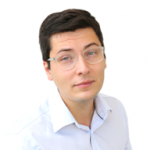 |
Maxim Shcherbakov We focus on nanophotonic materials and devices for applications in quantum and optical computing. Current projects include atomically flat, optically switchable magnetic memories; photonic integrated circuits for trapped ion quantum computers; phonon-polaritonic mid-infrared materials; optical neural networks based on femtosecond nonlinearities; and strong-field light-matter interactions in metamaterials. |
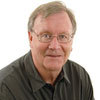 |
Kenneth Shea Organic synthesis is the enabling science for many new technologies. We are developing new methods and strategies for synthesizing carbon-carbon bonds. Projects include the use of pericyclic reactions to achieve control of stereochemistry, regiochemistry, and absolute configuration of complex polycyclic skeletons. |
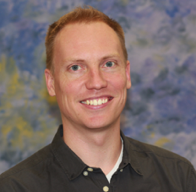 |
Matthew Sheldon The Sheldon laboratory studies fundamental questions about optical energy conversion relating to plasmonic and inorganic nanoscale materials. Experiments are principally designed to identify and optimize unique nanoscale phenomena that are useful for solar energy, as well as related opportunities at the intersection of nanophotonics and chemistry, for broad application beyond the scope of solar energy. Current research activities explore how nanofabricated materials can provide systematic control over the thermodynamic parameters governing optical power conversion. By controllably shaping, confining, and interconverting the energy and entropy of a radiation field, several different classes of light-powered heat engines become possible. |
 |
Zuzanna Siwy Our group fabricates single nanopores in polymer films with diameters as tiny as 2 nm, and tailored geometry and surface chemistry. We use these nanopores as templates for building ionic diodes and transistors thus devices, which control the transport of ions and molecules in solutions. The nanopores are also templates for biosensors. |
 |
Qi Song Our research group is dedicated to the discovery and development of novel low-dimensional quantum materials where every atom holds the potential to unlock profound quantum phenomena. With atomic-level manipulation, we are able to bring about extraordinary behaviors such as superconductivity and quantum magnetism, crafting these materials to reveal their full potential. |
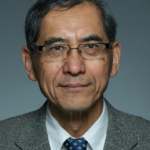 |
Toshiki Tajima Our Group is engaged in the laser wakefield accelerators (LWFA). This may be miniature-sized so that it can be applied to radiotherapy of cancer and cardiology. In addition, our Group is engaged in aneutronic (neutronless) fusion reactions and their applications to fusion reactors. |
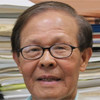 |
Chen Tsai I am interested in micro- and nano-scale photonics, magnetic and ultrasonic devices and materials. My current research activities focus on three areas: silicon-based photonics, magnetic film-based microwave devices, and MEMS-based Ultrasonic Nozzles for Biomedical Applications. |
 |
Lorenzo Valdevit Valdevit’s research is in the general area of mechanics of materials and structures. He has worked on the optimal design of multi-functional sandwich structures for aerospace applications (hypersonic vehicles in particular), and the thermo-mechanical characterization of organic substrates for the electronics packaging industry (in collaboration with IBM Research). Currently, his primary research goal is the optimal design, fabrication and experimental characterization of micro-architected materials with superior combination of properties. |
 |
Steven White My research is concentrated on the study of strongly correlated electron systems, such as the Hubbard model, which is used to describe high-temperature superconductors. My specialty is numerical approaches for solving the quantum mechanics of strongly interacting many-particle systems. The main numerical technique is the density matrix renormalization group (DMRG) I invented in 1992. This method has been very successful and has now been adopted by dozens of groups worldwide. |
 |
Max Wolfsberg We study rotational-vibrational energy levels of individual molecules by quantum mechanical techniques. The aim of such studies is, in part, to find efficient methods to carry out these studies. On the other hand, techniques already available are being used to study the interaction between rotations and vibrations and also the effect of molecular potential functions on molecular energy levels. |
 |
Ruqian Wu I develop and apply methods and codes for theoretical studies of various materials properties such as magnetic anisotropy, magneto-optical properties, magnetostriction, linear and non-linear optics, transport across interfaces and multilayers, the mechanical cohesion of grain boundaries and catalytic behavior of metal/oxide surfaces. |
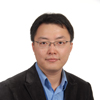 |
Jing Xia Our research interests include developing optical and magnetic techniques and using these techniques to study quantum phases of matter. Our ultimate goal is to understand the organizing principles of these complex materials, and by extension to use them for novel electronics and quantum computers. The current focus of our lab is on topological phases of matter, unconventional superconductors, and nanometer scale magnetism. |
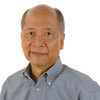 |
Albert Yee My research focuses on the materials science aspects of polymers and soft materials, particularly on how they are used to impact nanotechnology. His recent projects include nanoimprinting and nanopatterning using polymers; biomedical, micro- and nano-devices fabricated from polymers; and fracture, failure and toughening of polymers, composites, and nanocomposites. |
 |
Clare Yu Superconducting Josephson junction qubits are a leading candidate for making quantum computers. A major obstacle to the realization of quantum computers is noise and decoherence. I work with experimentalists to model the microscopic sources of noise. |
- YouTube
- Google+
ChaMP Graduate Program
4129 Reines Hall
UC Irvine
Irvine, CA 92697
4129 Reines Hall
UC Irvine
Irvine, CA 92697
